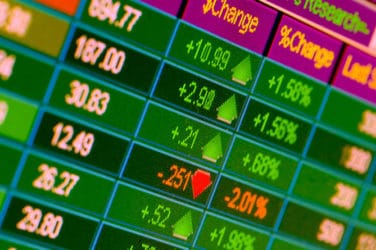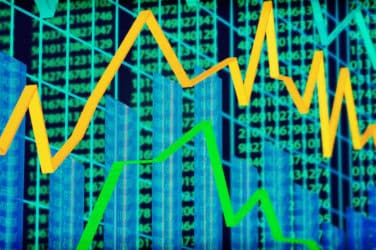The mid-summer month of July turned out to be a good one for exchange-traded funds.
After three straight months of headline-grabbing outflows that had some professionals and issuers worried, ETFs reversed course in July, taking in a healthy $28 billion during the month and bringing year-to-date inflows to $153.5 billion. If this rate holds, according to Matthew Bartolini, Head of SPDR Americas Research at SSGA, this puts inflows on track for the second best year ever behind record-setting 2017.

Matthew Bartolini, SSGA
“Despite escalating trade negotiations, investors deposited more than $18.7 billion into equity ETFs,” Bartolini told Traders Magazine. “And $18.6 billion of that total amount went into domestically oriented funds. While headline flows remain positive, monthly flow totals have become increasingly volatile, with 2018’s current $81 billion in dispersion of monthly flows already 15% higher than in any other calendar year.”
Barring any type of aberration in terms of inflow growth, he added that 2018 shouldn’t exceed last year’s high watermark of $466 billion in annual inflows.
In looking at the data in SSGA’s monthly Fund Flows report, Bartolini noted that the return of market volatility has introduced an unprecedented level of variability to ETF flows. For example, he said that in 2017, as the VIX plumbed new lows and the market seemed destined for the stratosphere, the ETF industry saw inflows in every calendar month, with an average take of $38 billion. What’s more, the dispersion, or range, of monthly inflows was just $29 billion, below the twenty-year average of $32 billion, despite the industry’s asset base increasing at a 35% compounded annual rate.
“Thus far in 2018, the monthly flow dispersion is $81 billion, already 15% higher than any previous calendar year, with five months to go,” Bartolini said. “It’s been a mixed bag this year. Three of seven calendar months have seen outflows, equivalent to 9% of all monthly outflows in the past 20 years. If outflows occur in one more month this year, it would be the first time in 15 years that we’ve seen four months of outflows.”
Leading the pack in terms of flows were equities with $18.7 billion in inflows. After having driven US equity outflows in June, large-cap funds staged a comeback to support the headline number level. With $9.8 billion in inflows in July, large caps surpassed small caps which have grown assets by 8.5% in 2018 due to outsized interest given their perceived status as more insulated from global trade dynamics. SSGA noted that large flows to and from US large-cap funds is to be expected, however, as the segment boasts an asset base of more than $1 trillion, representing 36% of all equity ETF assets.
Breaking it down further to the sector level, Health Care and Real Estate ETFs led the pack, attracting $2 billion and $1.4 billion, respectively. Bartolini pointed out Industrials and Materials ETFs both saw inflows in July, despite prevailing trade rhetoric, tariffs and tweets, attracting $798 million and $946 million, respectively. Financial ETFs experienced the largest outflow, dropping $553 million in July.
Running in second place for flows were fixed income funds with the category seeing $10.7 billion of inflows in July, marking the 36th consecutive month of inflows. The fixed income asset base has grown by 10.4% so far in 2018, three times faster than equity ETFs. Bartolini said this reflects the secular need for bond investments, driven by an enhanced desire to tactically buffer portfolios from market risk, and supported by an aging population that needs a stable source of regular income.
Commodity funds saw outflows for the third consecutive month, and have now shed $3 billion since April, roughly 5% of their asset base. The segment is a unique barometer for global trade, acting as the proverbial canary in the coal mine for global growth. With global trade on the brink, headline risks will continue for the segment, as key negotiations pertaining to NAFTA, the WTO and bilateral agreements with China remain very much front-of-mind for investors.
Despite the uptick in geopolitical tensions, precious metals, led by gold-backed funds, continued to see outflows, though the pace slowed from $1.9 billion in June to $782 million out in July. These outflows likely due to the outsized appreciation of the dollar, as gold and the dollar have an inverse relationship.





